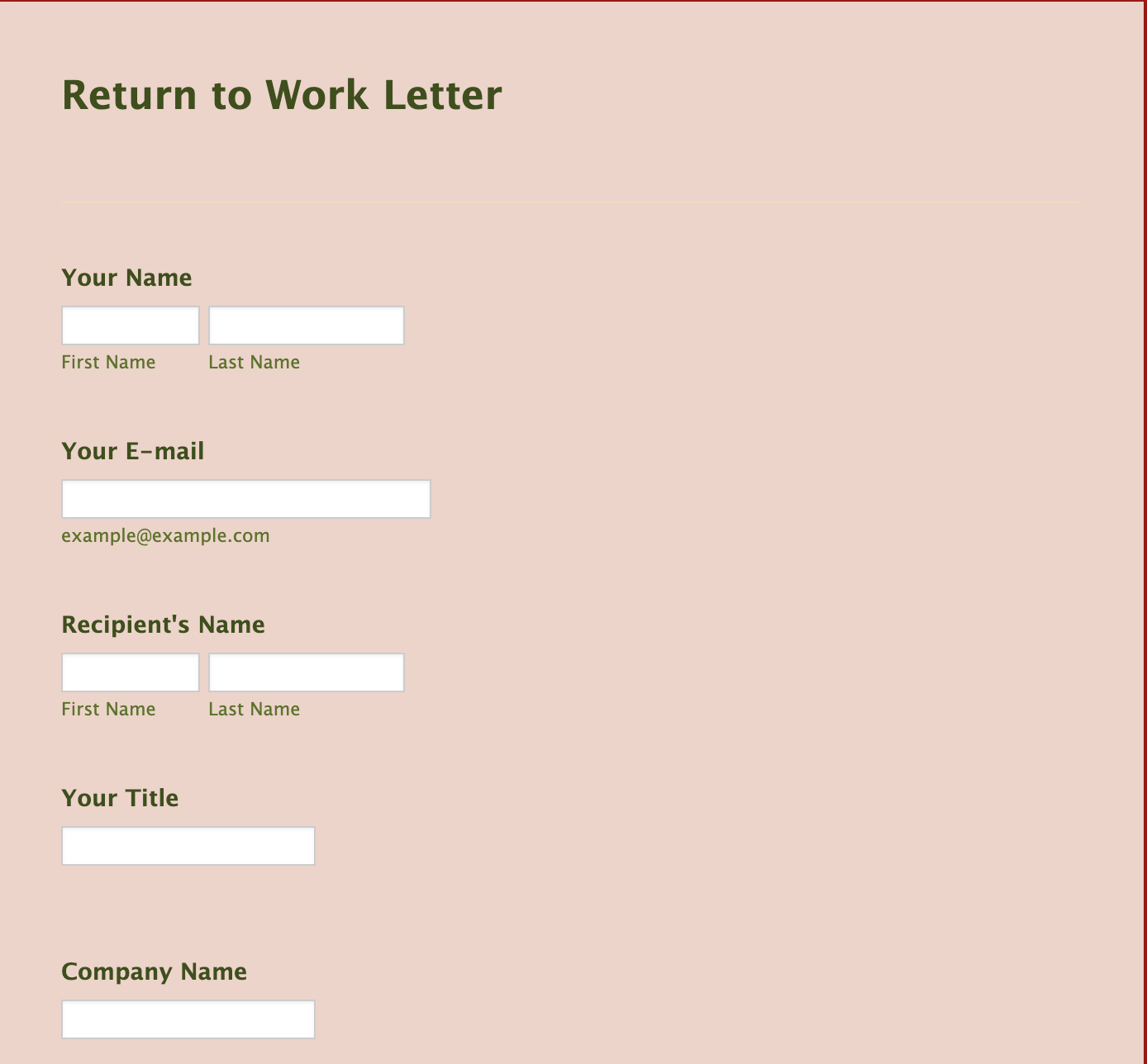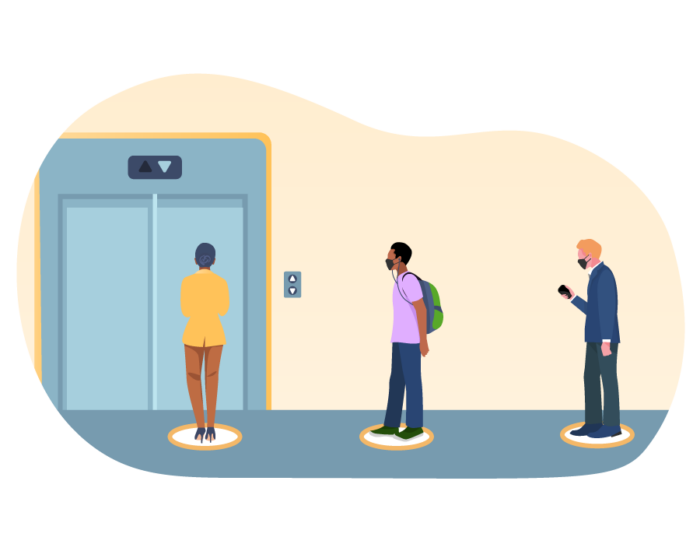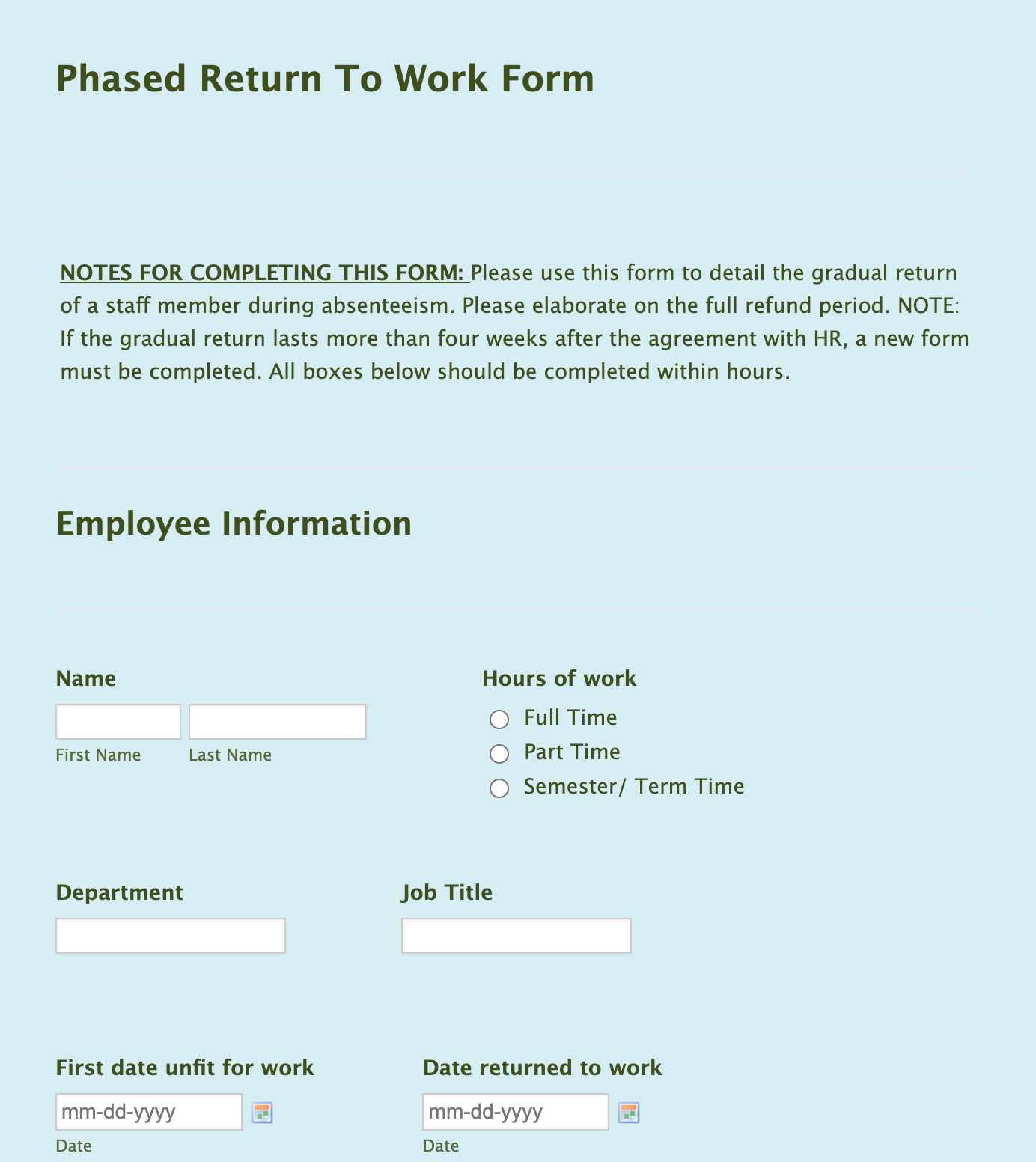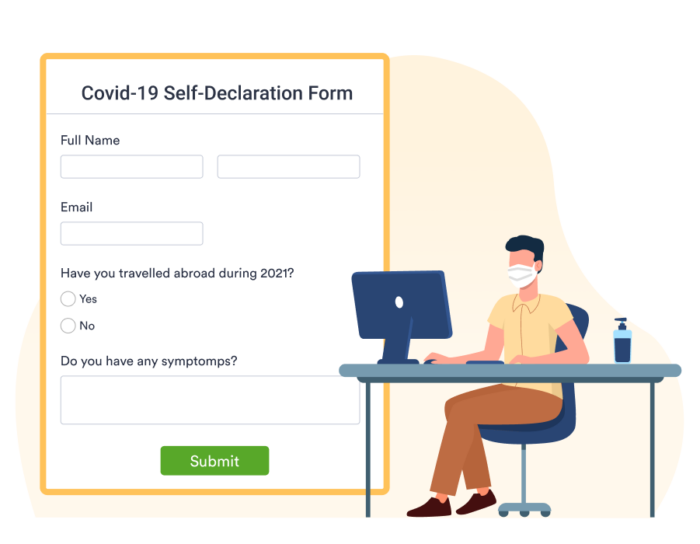For as long as there have been jobs, there’s been the office.
The idea of a central work location is ingrained in cultures around the world. People wake up, make coffee, eat breakfast, and commute to their place of work. Offices are where company cultures are nurtured and where employees work together to make their company better.
But what happens when that goes away?
When the COVID-19 pandemic struck in early 2020, it wasn’t safe to gather in groups, meaning the traditional office structure as many knew it couldn’t exist. It also meant that company leadership had to adapt to keep business moving while accommodating employees who started working remotely.
Prior to the pandemic, more than 5 million U.S. employees primarily worked from home at least half of the time. Global Workplace Analytics estimates that 56 percent of the U.S. workforce is able to do their jobs remotely.
Still, with remote operations comes the potential for less face-to-face communication. Before COVID-19, if you had a question for a coworker or supervisor, you could just pop over to their office. A fully remote work setting requires video meetings, emails, or instant messages to get in contact.
That lack of face-to-face contact has an impact. Case in point: The Pew Research Center found that 71 percent of workers were working remotely most or all of the time during the pandemic — and that 65 percent of those said they feel less connected to their coworkers.
Thankfully, there is light at the end of the tunnel. With more and more people getting vaccinated, a return to the office — and the familiarity that comes with it — is just around the corner. In this chapter, we’ll explore how companies can establish return-to-office guidelines and what the office will look like in a post-pandemic future.
Learn to adapt
According to Gallup, almost 70 percent of men and 57 percent of women aged 20 and older are actively working in the U.S. Of these workers, 80 percent say the pandemic has affected the way they do their jobs. To establish return-to-office guidelines, it’s important to understand the specific challenges companies have faced in the past year.
Employee management
You can’t know what you can’t see. For those used to working in an office, it can feel like managers and employees hold each other accountable simply by being in the same place.
With remote work, employees are more responsible for how and where they do their jobs. Giving a pep talk over Slack or Zoom to an employee who needs encouragement isn’t always the same as doing it in person. As a result, managing people online looks a bit different than it does in the office.
Mental impact
Working from home, even in the best of circumstances, can be lonely. We’re all social creatures, and it’s natural to want some form of in-person communication throughout the day.
Not being able to meet face to face has changed the way employees interact. For example, according to data from TINYpulse, people hired during the pandemic gave recognition to their peers 34 percent less often than those hired before the pandemic.
Part of the routine of going to the office is seeing the same people every day. When that was taken away, companies had to adapt and check in on their employees to see how they were feeling and how home life might have been affecting their work.
Logistics
With a shift to remote work came the need to adjust operations. Thankfully, video chatting and messaging platforms helped pick up this slack, but making the switch from face-to-face to digital communication didn’t come without hiccups.
It would be unfair to expect a seamless adjustment to a new way of working. Companies had to figure out how to set up meetings, learn the programs that function best for them, and translate tasks that normally were done in the office to the home.
Of course, you probably got better at this as the year went on. At the same time, you also might have felt there was something missing, especially compared to the type of collaboration and creativity that can come with being in the same room with others.
Employers can define return-to-work guidelines by incorporating these missing elements. Companies can also improve their workflows by applying the lessons learned from a year of remote work.
Different approaches
As the pandemic has started to recede, there hasn’t been a universal approach to returning to the office.
Companies like Twitter and Square were quick to announce in mid-2020 that employees would be allowed to work remotely if they wanted, even after it was safe to go back to the office. Google announced at around the same time that its employees would be remote until 2021.
Meanwhile, a year later, Apple announced its employees will be expected to work in the office for three days a week beginning in September 2021. Overall, these different return-to-office guidelines reveal a couple of things:
- There is no one-size-fits-all approach to welcoming employees back to the office — or to how often they should be there.
- There will be a trial-and-error period. No company has experienced anything like the COVID pandemic before; naturally, the guidelines will be a work in progress.
Work to scale
Companies with large footprints like Twitter and Facebook aren’t the only ones considering their return to office guidelines. Many small and mid-sized businesses don’t have the same resources to scale their operations for remote work that larger companies do, and these companies in particular may be anticipating a return to pre-pandemic operations in the near future.
In a poll of 1,000 leaders, small business management software company Sage found that most expect a return to pre-pandemic-level revenue growth by the end of 2021, and only 16 percent plan to decrease budgets for in-office perks for their employees.
Respondents also indicated that they plan to implement the measures they’ve put in place in the past year to help increase efficiency. Taken together, these are signals that a return to the office is coming sooner rather than later.
Pandemic protocols
Returning to the office will likely involve some growing pains. Employers should take a few steps to make sure employee morale remains high after a long and difficult year.
Create a safe office
From a practical standpoint, even with vaccinations rising, you need to put proper measures in place to make sure your office is clean. According to research from human resources services firm Gartner, 89 percent of companies plan to conduct regular deep cleaning of workstations. Plus, 72 percent of those surveyed said they’ll require or provide masks for visitors.
It might seem obvious, but your employees will be more comfortable coming back to work if they know that your return-to-office guidelines address their concerns. Putting the right measures in place is one way to assure them that you’re looking out for their best interests. For example, the Centers for Disease Control and Prevention provides printable posters to complement your company’s health guidelines and plans.
Even better, companies may consider creating written documentation for employees to record any concerns. A form creator like Jotform, which offers customizable return to work templates, is a great solution to make sure your transition to the office runs as smoothly as possible.
Meet employees in the middle
An Eden Workplace survey found that 61 percent of workers who want to return to the office prefer that COVID-19 protocols be put in place as part of return to office guidelines.
It’s important to explain to employees what you’re doing to create a safe work environment. A return to normal isn’t going to happen overnight. Acknowledging this fact and listening to employee questions will bolster your company culture.
Establish proper channels
As you create return to office guidelines, you should also consider how you’re going to reach your employees. In addition, you should lay out a clear plan of action in case your office encounters any problems related to COVID-19.
That means informing employees about the steps you’re taking and the strategies you’re instituting. You can also have a productive discussion with employees about the company’s approach and answer any questions they might have.
Be flexible
A return to the office is not a cut-and-dried process. You’ll figure out strategies and changes as you go along. Think about setting aside time every so often to check in with your employees in the coming months to make sure you’re meeting their needs and addressing their worries.
Everything about returning to work in these circumstances is new. And if your employees are uncomfortable or feel unsafe in the office, their work will suffer. Business owners should be willing to admit what they don’t know and welcome feedback. Companies that don’t commit to these practices could risk affecting their efficiency and their bottom line.
Look to the past
Before the pandemic, your company had its own way of conducting its operations. Though COVID-19 threw a wrench in these day-to-day methods, a lot about them probably worked well.
Keep what was successful pre-pandemic in mind as you establish return to office guidelines. Combining what worked pre-pandemic with COVID-19 adaptations can foster innovation, helping your company evolve.
Establish best practices
You’re not going to have all the answers for returning to the office right away. A new process that’s never been attempted doesn’t come with a guidebook. But as more companies welcome back their employees, you’ll start seeing which methods work best for your organization.
It’s your job to monitor these practices, listen to your employees, and establish guidelines that make sense for the way you like to do business. Think of this time as an opportunity for growth and discovery for your company, as you evaluate where it is now and where it’s headed.
Now that we’ve discussed the challenges companies face in bringing employees back to the office, it’s worth diving deeper into the responsibility they have to keep them safe. In the next section, we’ll explore the different factors you should consider and how you can address them.
Responsibilities of the business
A company’s culture is never set in stone. Think of it as a living thing that constantly changes and evolves to meet the circumstances around it. A healthy company culture is one that makes employees feel comfortable, included, and most important, safe coming to work every day.
Amid the COVID-19 pandemic, there’s been a greater emphasis on this need to feel safe. And as vaccinations increase and businesses begin to welcome employees back to the office, defining measures to protect everyone from infection — and making a plan to institute them — is the best way to ensure employee safety.
Early this year, CREtech reported that almost 60 percent of employees expected to return to the office by the end of the first quarter. A poll of executives found that health and safety concerns were most often cited as a top issue they’re facing in returning to the office.
Deciding to return to in-person work is just the first step. Companies need to create guidelines that make their offices COVID-safe. Without a clear plan, even those with the best intentions risk creating confusion and disorganization that can affect workflows and efficiency.
Though there are dangers, with proper care and planning, you can keep your employees safe and avoid any roadblocks on your return to the office.
In this chapter, we’ll explore what protocols you can put in place, how you should implement them, and how you can establish proper communication to make sure everyone in your organization is on board.
Adapt to the times
When your employees return to the office, you’ll need to take precautions you’ve never considered. To return to normal, you’ll need to create conditions that acknowledge the extraordinary situation you and companies across the country find themselves in.
Think about spacing
We’ve all heard it throughout the past year: Whenever possible, try to stand 6 feet apart from others. And while vaccinations have made being close to someone else safer, it’s still best to uphold this rule. Think about all the places your employees interact with each other — like the parking lot, elevators, and bathrooms — and create proper guidelines to make sure they’re all as safe as possible.
If certain team members frequently visit clients, then consider who will be in the office at different times throughout the day. Be sure your employees know the new rules. Even if you have the right measures in place, they won’t do much good unless everyone on your team is aware of them.
Get creative
You may have to reconfigure your office space to adapt to the challenges post-pandemic work poses. Last summer, a poll from risk management firm Willis Towers Watson found 56 percent of companies had already redesigned their offices in some way in response to COVID-19.
Think about the different barriers and dividers you can set up. You can even have some fun with it and encourage people to decorate.
Stay clean
Cleanliness took on new importance during the pandemic, and it’s still important to keep surfaces and work stations clean. Bringing people back to the office creates the potential for more germs. Use cleaning products guaranteed to kill the maximum number of bacteria and viruses, such as bleach or hydrogen peroxide.
Overall, hygiene should always be a top priority in your office. But with the more urgent focus on cleanliness over the past year, showing your employees that you’re taking steps to protect them can go a long way in boosting morale.
Be proactive
In addition to creating new rules, your business can anticipate solutions that will positively impact how you work. That means auditing your existing processes and brainstorming ideas for how you might adapt them to protect against COVID-19.
Think about your facility
What does your office look like? Are there opportunities to create new workstations? If so, you might consider outdoor working options. When the weather’s nice, have your employees collaborate outside. The risk of outdoor COVID-19 transmission is 20 times lower than it is indoors, after all.
With outdoor workstations, you can welcome employees back to the office with a safe alternative that still brings your teams together. For instance, you could take advantage of your office building’s rooftops and balconies, and work with your team to figure out how you might optimize these spaces to maintain the same efficiency you’d have working indoors.
Outfit your office
COVID-19 is most commonly transmitted through the air — in fact, it can live in the air for up to three hours — meaning it’s most likely spread in enclosed spaces with others. That’s why we’ve all been wearing masks the past year.
You probably didn’t give much thought to your office building’s HVAC system in the past. But now, as good air quality is an important part of reducing virus spread, think about the last time it was updated and what upgrades you might need.
Design your mask policy
Though the Centers for Disease Control (CDC) mask guidelines are looser than they were a few months ago, it’s ultimately up to you to set your mask policy. You can provide masks for outside visitors and tell your employees when they should mask up.
Be sure your employees understand your masking regulations so there isn’t any confusion. And if some employees feel safer wearing a mask even if they’re fully vaccinated, you should support them and respect their wishes. One person’s comfort level might be different from someone else’s — another reason it’s important to listen to your employees’ concerns.
Install signage
Creating new policies requires effective communication to keep everyone in your organization on the same page.
At first, employees might feel overwhelmed with the amount of information thrown at them regarding COVID-19 procedures. To ease some of these worries, the CDC recommends putting up signs that relay your policies, including reminders about social distancing, hand washing, and health precautions the company is taking to keep everyone safe.
Consider how you gather
Because person-to-person transmission is the most common method of COVID-19 spread, you should think about how your employees will interact with each other. Eating lunch in a breakroom was inconsequential before the pandemic. Now, you might encourage employees to eat at their desks for the foreseeable future.
You can also set up your conference rooms for social distancing and encourage people to take the stairs to reduce traffic in office elevators. These are all small measures, but together they can make a big difference.
Learn from others
While certain measures will be unique to how your company works, remember that we’re all in the same boat. Coming back to the office means that all businesses are creating their own return to work strategy. Monitor those strategies and adopt elements for your company.
For example, both Tesla and Dow have created return to office strategy playbooks that outline how they’re going to welcome their employees back. These are some of the highlights:
- Set up temperature checks. You’re probably familiar with temperature checks — they’re an easy way to detect possible COVID-19 symptoms. Tesla has included them as part of its return to work strategy. You can require them at your office to catch any illness before it spreads.
- Promote the honor system. In the same way employers are expected to be transparent in their health policies, it’s up to employees to self-report if they aren’t feeling well. Tesla’s return to office strategy stresses the need for employees to notify their supervisor when they’re feeling ill.
- Stress healthy habits. Carpooling might have been popular among your employees before the pandemic. But at least in the short term, Tesla notes that gathering in a small space to commute might not be best. Stressing these ideas reinforces your new expectations for employees under your return to office strategy.
- Check in on your employees. We’ve all been through a lot in the past year, and it’s important to remember that in the way you communicate. As Dow notes, there’s going to be a grace period welcoming employees back. Be patient with your teams. Check in to see how they’re doing, and listen to any of their concerns or worries.
- Be ready to distribute materials. A singular meeting or email outlining your return to work strategy isn’t going to be effective. Any time you write new rules, put together a presentation or notes to give to your employees for reference when questions arise. It’s what Dow is doing for its employees, and it’s a great idea to adopt in your company.
- Offer personal protective equipment. Like Dow, you can have masks and gloves on hand for employees who might not have access to them or who simply forget to bring them. The presence of this equipment shows your employees that you’re thinking of their needs and that they have resources available to them.
Make a checklist
When creating your return to work guidelines, stay organized. Crafting a return to the office after COVID checklist is a great way to do just that. Here are some of the action items you should include on this checklist:
- Survey your employees on their thoughts, concerns, and vaccination plans.
- Be clear in how to handle office visitor interactions.
- Designate committees and employees to pass out materials and enforce your playbook.
- Assign employees to monitor changing laws and restrictions.
By clearly defining the responsibilities and expectations of employees in your return to office after COVID checklist, you can further streamline your operations. In the same way you keep detailed budgets and meeting notes, your checklist can serve as a map for a safe and secure office environment.
Safety first
Employees who don’t feel comfortable in their work environment aren’t going to produce quality work, so employee safety should always be a top company priority. What safety means changes based on our circumstances.
With workers returning to the office in the U.S., putting the right measures in place is vital. Be sure to use a collaborative, thoughtful approach to writing your return-to-office strategy. That way, your organization can get back to doing what it does best.
Now that we’ve explored how companies can protect their employees as they return to the office, let’s dive deeper into how to communicate these policies. Read on to find out how to best connect and educate your employees in the coming months.
Preparing employees
Employers have a responsibility to prepare their employees to come back to the office as the COVID pandemic eases; however, employees also need to follow company guidelines.
The employer-employee relationship is far from a one-way street. Employers should do everything they can to make their offices safe for returning employees. Once that happens, employees can take steps to make sure that these plans are realized.
In this chapter, we’ll explore what employees need to be mindful of in their return to the office — and how employers can reassure them and help them follow new practices and procedures.
Employee initiative
For the past year, the COVID-19 pandemic forced everyone to adjust their daily routines and lifestyles. Returning to work is no different. When employers lay out their return to work plans, employees will need to be ready to adjust. Let’s dive into some of the actions employees can take to make sure company operations run as smoothly as possible.
Avoid high-risk areas outside of work
In a pandemic, where employees spend their free time directly impacts everyone they work with. Now more than ever, honesty and forthrightness are vital.
Employers need to stress to employees that they should avoid heavily populated or poorly ventilated spaces — where the risk of contagion is higher — as much as possible. Because the virus spreads through close contact, employers should encourage their employees to do the right thing.
On the other hand, employees need to listen to these directives and consider those around them in their choices.
Following these procedures is a way for everyone to help foster company morale, as it makes everyone feel like they’re part of a team. Make sure your employees are part of a collective effort to successfully return to the office. Be sure you’re taking the necessary steps to get employees to buy into helping themselves and their coworkers.
These efforts are directly tied to your success as a company, and anything that gets in the way of these goals can negatively impact your bottom line.
Vaccination education
The vaccines for COVID-19 are extremely effective. Vaccines are the reason returning to the office is possible — they’re a life-saving measure that has allowed all of us to start going back to our previous daily routines.
However, there has been a lot of misinformation about vaccine safety. Because of this, a recent poll of workers showed that 40 percent “probably or definitely” won’t get vaccinated. Even more stark: 70 percent of this group would rather lose their jobs than get vaccinated if their employers required the vaccine.
There are a few reasons for vaccine hesitancy cited in the poll results: 69 percent are worried about side effects; 58 percent want more time to think about it; and 41 percent don’t trust the vaccine at all.
If you’re prioritizing employees returning to your office, you have a responsibility to both provide vaccine education and encourage your employees to get their shots as soon as possible. While it’s alright to be direct in these vaccine conversations, you should also listen to employee concerns.
An employee might be unwilling to get the vaccine because of misinformation. As an employer, it’s your job to educate them about how their actions impact the company as a whole and to look out for the best interests of both your business and your employees.
One way to do this effectively could be to incentivize employees to get the vaccine if they haven’t already. A survey from Arizona State University found that around two-thirds of U.S. employers are planning to offer some sort of incentive for employees to get vaccinated. Of those, 44 percent said that if these potential rewards don’t make an impact, they’ll require employees to get vaccinated.
Avoid any mandates if you can. Be mindful, and take note of the types of rewards other companies are offering and the vaccination programming they’ve instituted. Provide resources that help hesitant employees take action, like information on where to get vaccinated.
In the same way you might prepare your office to make it safe, you should also make an effort to ensure the health of your employees. That means talking to them about the COVID-19 vaccine, why it’s safe, and how it can help ensure a successful return to the office.
Employee management
Your business made it through the past year, and that’s something to be proud of. Despite the roadblocks, implementing a return to office plan means that your company is in a good place to begin the march toward normalcy.
At the same time, returning to workplaces isn’t going to be cut and dried. There’s a lot from the past year to process, and if employers act as if the pandemic didn’t happen or try to work in exactly the same ways as before the pandemic, they’re not going to be successful.
Try to think about what worked well in the past year. Consider a survey from PricewaterhouseCoopers that revealed 83 percent of employers think remote work has been successful for their companies. How that success is defined will vary, but with a year to iron out the kinks, you’ve probably established some sort of efficient remote working system.
If employees are already hesitant to stop working remotely, that means the transition back to the office needs to be as smooth as possible. If you meet resistance to a return to the office, try to understand where they’re coming from so you can address their concerns. Try the following tactics:
- Keep employees safe. We’ve discussed this issue in previous chapters, but it bears repeating: Making sure your office is properly outfitted against COVID-19 is extremely important. Employees notice these kinds of precautions, and they can go a long way in easing their worries.
- Acknowledge the situation. Recent research shows that 41 percent of workers are burned out by work, while almost half report feeling mental or physical exhaustion at the end of the workday. The pandemic hasn’t eased these feelings, so being sympathetic to employee concerns can help them feel like the company listens to them and like they’re a part of a larger mission.
A year is a long time to be away from the office. Just like your coworkers, you’ve probably developed a routine and habits while working remotely. To ease employees back to the office, ask them what you can do to make the transition as easy as possible.
- Reestablish your values. By nature, the way your company works remotely is different from how employees collaborate in the office. When you return to the office, be sure to stress how your operations are going to work and what you expect of employees. Employers should make themselves available and send out educational materials that discuss the precautions they’re taking and how team members can work together to achieve company goals.
Employee mindset
Part of a return to the office is preparing employees who have gotten used to remote work to transition back. If recent data is any indication, that might be harder than it sounds.
A Harvard Business School survey of 1,500 remote workers revealed that 81 percent aren’t ready for a return to the office, and only 18 percent want to come back to in-person work full time.
Statistics like these are everywhere — a CHG Healthcare survey indicates that just 9 percent of workers want to return to the office five days a week. Great Place to Work, which studies workplace culture and trends, discovered that 54 percent of workers aren’t excited to resume in-office work.
Great Place to Work also found that just 35 percent of employees feel sufficiently safe to return to the office. What’s more, Business Insider reports from a Morning Consult survey that 39 percent of employees said they’d consider quitting their job if remote work isn’t an option moving forward.
Employers have work to do in increasing employee comfort levels about returning to in-person work. If you don’t manage the transition carefully, you risk losing talented employees and the confidence of those committed to staying.
Company leaders should make an effort to understand how their workers feel and supply them with the resources they need to feel comfortable and excited about returning to the office.
Welcome employees back
When the time comes to welcome your employees back to the office, you’ll need to make sure you have an effective rollout plan. No employee should be confused about when the office will reopen or what they need to do to prepare.
A great way to lay out this information is a return to office announcement. Your announcement should welcome employees back, outline any new policies you’re implementing, and offer support and direction in case they have any questions. Make sure your note expresses sympathy for the situation you and your employees find themselves in and be clear about your expectations in the coming months.
When you’re creating a return to office announcement, you’re going to need a platform to host it. Jotform’s return to work form templates allow you to customize each element to your needs. You can even integrate with third-party apps to make sure that any programs or initiatives you’re instituting will run smoothly.
Maintain a solid relationship
If your employees feel valued, they’re going to do their best work. Your job as an employer is to equip employees with the tools they need for an effective return. If you do that, they’ll be clear about their responsibility to follow proper procedures. Given how unpredictable the past year has been, doing everything you can to eliminate uncertainty will help your return to work plans run as seamlessly as possible.
Now that we’ve discussed how employers can empower their employees to follow return to office procedures, let’s look into exactly how you can monitor these steps throughout the process. Read on to learn more about tracking employee safety and how employees can do their part to maintain a safe work environment.
Self-declaration
Navigating the employer-employee relationship can be tricky. While employers want their employees to be comfortable, they also have to maintain structure for their business to run efficiently.
That means establishing roles and responsibilities so that members of your organization understand what they’re supposed to do. It also means setting expectations for employees regarding proper procedures and workflow processes.
As an employer, it’s in your best interest to make sure you know how your employees work and what each of them are working on. Beyond this, it’s your job to make sure employees follow the policies that make the office a safe, fair, and successful environment for all workers and stakeholders.
Over the past year, that might not have been easy to do in a remote work environment.
However, as you return to the office, make sure your employees aren’t just working to the best of their abilities but also following proper health protocols. Instituting and following through on a COVID-19 response plan is the best way to help your business approach how it operated pre-pandemic.
In this section, we’ll explore processes for monitoring COVID-19 response procedures, the types of activities you should be tracking, and the best practices to carry out these initiatives.
Track employees
In the same way you might adjust your product line to meet market demands, you should also adjust your in-office practices in response to the pandemic. For example, at companies like Amazon and Walmart, temperature checks to monitor employee health have become a regular occurrence, while other businesses are considering installing thermal sensors to track employee health.
But tracking employee activity and health has to be done tactfully. Though employee monitoring has become an increasingly popular practice — with an estimated 80 percent of companies doing some kind of monitoring — you still need to tell employees exactly how they’re going to be tracked.
Even though 90 percent of employees said in a study that they are open to employers “having visibility into their daily productivity” through tracking software, you risk losing employee trust if monitoring isn’t done carefully. Keeping an open dialogue and laying out expectations creates more focused and driven employees. That way, they’ll remain eager to meet their goals.
Collect health data
In the COVID-19 pandemic, employees’ health is more important than it’s ever been. Business owners should think about how to ensure their employees aren’t carrying the virus or exhibiting any symptoms.
Companies need to invest in the right technology to maintain safe workplaces. That can come in the form of wearable fitness accessories or applications. Also think about the types of data you want to track, such as whether or not employees are vaccinated or if they’ve traveled in the past two weeks.
The best way to create a monitoring strategy that keeps others as safe as possible is to consider your work environment and how the virus might spread in your workplace. To do this, employers should
- Screen workers before entering the office or ask them to self-report. This requires trust — make clear to employees that honesty is the best policy.
- Provide guidelines to define “sick” employees, including employees who test positive for COVID-19 but don’t have any symptoms.
- Outline when it’s safe for employees who have tested positive to return to the office.
When employers organize these self-declaration protocols, they can then create a much more streamlined process for collecting and following employee health data.
Doing this also allows employers to expand on their policies as they begin to examine how well their screening processes work. For example, businesses usually have time-off policies that managers can retrofit to adjust to the pandemic, eliminating confusion so employees know exactly what to do if they test positive.
What’s more, employees who travel out of state or out of the country will need to self-report any exposure or symptoms — and get tested. Businesses should consider how to amend the travel plans and responsibilities of employees who traveled extensively as part of their jobs before the pandemic.
You can also consider scheduling a virtual meeting instead of traveling to meet a client in person. Setting this example encourages the same behavior in your employees and other business owners in your industry. Plus, this type of thinking can help you reassess your business and prioritize the tasks and clients that are most important to your bottom line.
Overall, even if you think you have a fool-proof plan for returning to the office, you can’t control all the variables. It’s unreasonable to track employees 24-7. Instead, focus on stressing clear guidelines for returning to the office, teaching employees how they can protect their coworkers, and letting them know what they should do if they are exposed to the virus or fall ill themselves.
Strike a balance
Anytime you introduce new policies or mandates to your employees, you’ll likely meet some resistance. We all like routine and familiarity, and it’s disorienting when these comforts are disrupted.
It’s your job to create clear messaging and communication to get your employees to buy into your new COVID-19 return to office protocols. If you don’t, your employees could feel as though you’re attempting to take away their privacy. That’s the last thing you want — especially since reestablishing in-office company culture is an important part of returning to work.
Even before the pandemic, a Gartner report found that, of 239 companies, 50 percent were increasing their employee monitoring efforts. In 2019, an Accenture survey of C-suite executives found that 62 percent of their companies were exploring new technology for collecting employee data.
However, Accenture also found that 52 percent of employees think data mismanagement can harm trust in employers. That’s why it’s important to understand how to manage not just company data but also the types of data you can collect.
If employees come to you with concerns, you can explain why you’ve instituted certain policies. Some of the measures you might take include
- Asking employees about their future travel plans
- Passing along educational information about best practices as well as CDC recommendations on how to reduce the spread of the virus
- Requiring temperature checks and filling out forms about travel once employees return to work
Be sure to keep employees up to date on any policy changes so that they don’t feel blindsided. Make sure your rules are solid too. If you change them every few weeks, your employees will be confused and frustrated.
Put systems in place
Data won’t do you much good if you don’t have a place to organize and store it. You’ll need to set up the proper infrastructure as you design your return to office data-collection plans.
When it comes to proper COVID-19 employee tracking, a self-declaration form provides the most flexibility for collecting information on the categories you want to monitor.
Self-declaration forms are a way for employees to report any symptoms they’ve been experiencing. These forms should include information related to travel and anyone an employee might have been exposed to. They should be easy for employees to complete, so that you’ll be more likely to collect accurate data. Here are a few measures you can take to make sure this happens:
- Incorporate your policies into your forms. In your return to the office communications, present a united front. Giving your employees one directive and including a different one on your form will create confusion and disrupt your processes. Be sure to streamline protocols across your organization so that employees will follow them to the letter.
- Integrate with tools you already use. Use any existing platforms or software you’ve used in the past to track health data. This can help move the process along and save time on training employees to use new software.
- Organize your reporting structure. Designate a team or individuals within your company to be responsible for gathering, handling, and reporting collected health data. This way, you know exactly who and where to turn to if you need to access employee information quickly.
Types of self-declaration forms
In your return to the office, collect different types of data with the right forms to improve tracking. Let’s dive deeper into the different forms you can use for detailed and helpful health monitoring.
Reporting infection
A self-declaration form is specifically for employees who have contracted COVID-19. It allows employers to take the proper steps to alert other employees and prevent further virus spread while the ill employee concentrates on getting the proper treatment.
You can create detailed self-declaration forms with a template from JotForm. Employees can fill in contact information, list their recent travel history and anyone they’ve been exposed to, and detail their symptoms.
Jotform also provides HIPAA-friendly forms to protect sensitive employee medical information. You can add form fields and images to the customizable form, and integrate it with your workflow software or apps.
Self-screening forms
Decide how often to screen your employees and the types of health questions to ask. That’s where a self-screening form comes in handy. You can ask employees whether they have any COVID-19 symptoms as well as their travel history. You can also ask them to elaborate on their answers and offer them advice on what to do next.
With Jotform, you can take advantage of an all-in-one self-screening questionnaire that allows you to track employee health conditions. Having a form for each of your employees is the best way to keep your entire office safe. If, for instance, you want to know the health status of a certain employee — or remember how long it’s been since they reported symptoms — you can simply refer to their self-screening form.
Coronavirus response forms
Organizations in the healthcare, nonprofit, and government sectors might need to create more detailed forms for the best COVID-19 data collection and reporting possible. Paperwork is a foundation of day-to-day routines in these organizations. If that describes your organization, you likely have an accepted process for filing paperwork.
When introducing a new form and workflow, be consistent with established processes.
With Jotform’s coronavirus response form, you can collect patient assessments or monitor the effectiveness of safety protocols. You can also incorporate software integrations and customize your forms so that you can stay the course and maintain productive business operations.
For first responders, Jotform offers a Coronavirus Responder Program without any form submission, storage, or payment limits. Under this program, first responders can use Jotform to collect and categorize pandemic data. Following and tracing the COVID-19 pandemic helps stop its spread, and Jotform wants to do its part in making these efforts as successful as possible.
Collaborate with employees
Implementing new rules and employee guidelines means your workers will naturally have questions. Seek input from employees to keep operations moving smoothly and eliminate uncertainty.
Clear communication channels allow companies to fine-tune their guidelines. Your employees might offer suggestions you hadn’t thought of that can make everyone’s lives easier. Think about the ways you can poll your employees and incorporate their feedback.
What’s more, the safety and reporting measures you institute aren’t likely to be temporary. While the pandemic is heading in the right direction, it’s not over yet. That’s why gathering employee input on the rules that will govern how your employees get back to normal is important. Ask them how they feel about returning to the office and what would make them feel safer.
Create a survey
One way to poll your employees about their feelings on coming back to the office is through a return to office survey. This type of survey helps you take stock of employee sentiment and the measures they’d like implemented in the workplace.
Asking the right return to office survey questions can help you refine the in-office work environment for your employees. Include a question about which department they belong to so that you can view and sort responses from different work groups.
To gather this information, you can create a return to office survey using JotForm. You can also design targeted questions and customize your form with company logos and preferred fonts to create a survey that’s unique to your organization. If you’d like to get a bit more specific with your survey questions, Jotform has a form template just for this purpose.
Plus, Jotform allows users to complete surveys or monitor responses on any device. You can also integrate forms with third-party platforms like Google Drive or Slack. Finally, Jotform Tables gives you a one-stop destination to view and analyze responses.
Follow the honor system
In normal times, you and employees in each of your organization’s teams know the expectations of the job — the standards you expect them to uphold. But in times of crisis, such as the COVID-19 pandemic, these standards can extend to your employees’ behavior out of the office.
Designing systems for employee self-declaration is a two-way street. Companies need to make the process as simple as possible while collecting the necessary data. On their end, employees need to answer promptly and properly so employers can adjust their office environments accordingly.
By asking the right questions through detailed forms, COVID-19 tracking can go off without a hitch. You can march toward a new normal while keeping your employees safe in the process.
Conclusion
The COVID-19 pandemic marks an unprecedented time for businesses. But this bears repeating, because it’s your responsibility to figure out how to protect your employees and their families during this time. Of course, your employees will also need to do their part in reporting virus symptoms and offering feedback to help your return to the office go smoothly.
Take advantage of resources like Jotform to monitor employee health. Remember that the steps you implement probably won’t be set in stone, and give yourself room to adapt as you go.
If your ultimate goal is to return to the office and to stay there, that can only happen if you stay vigilant, keep your employees’ best interests in mind, and be willing to adjust to remain a forward-thinking business in a post-pandemic world.













Send Comment:
1 Comments:
More than a year ago
Thanks for sharing such a valuable post. Employees are returning to offices and it is responsibilty of organization to motinor their health.